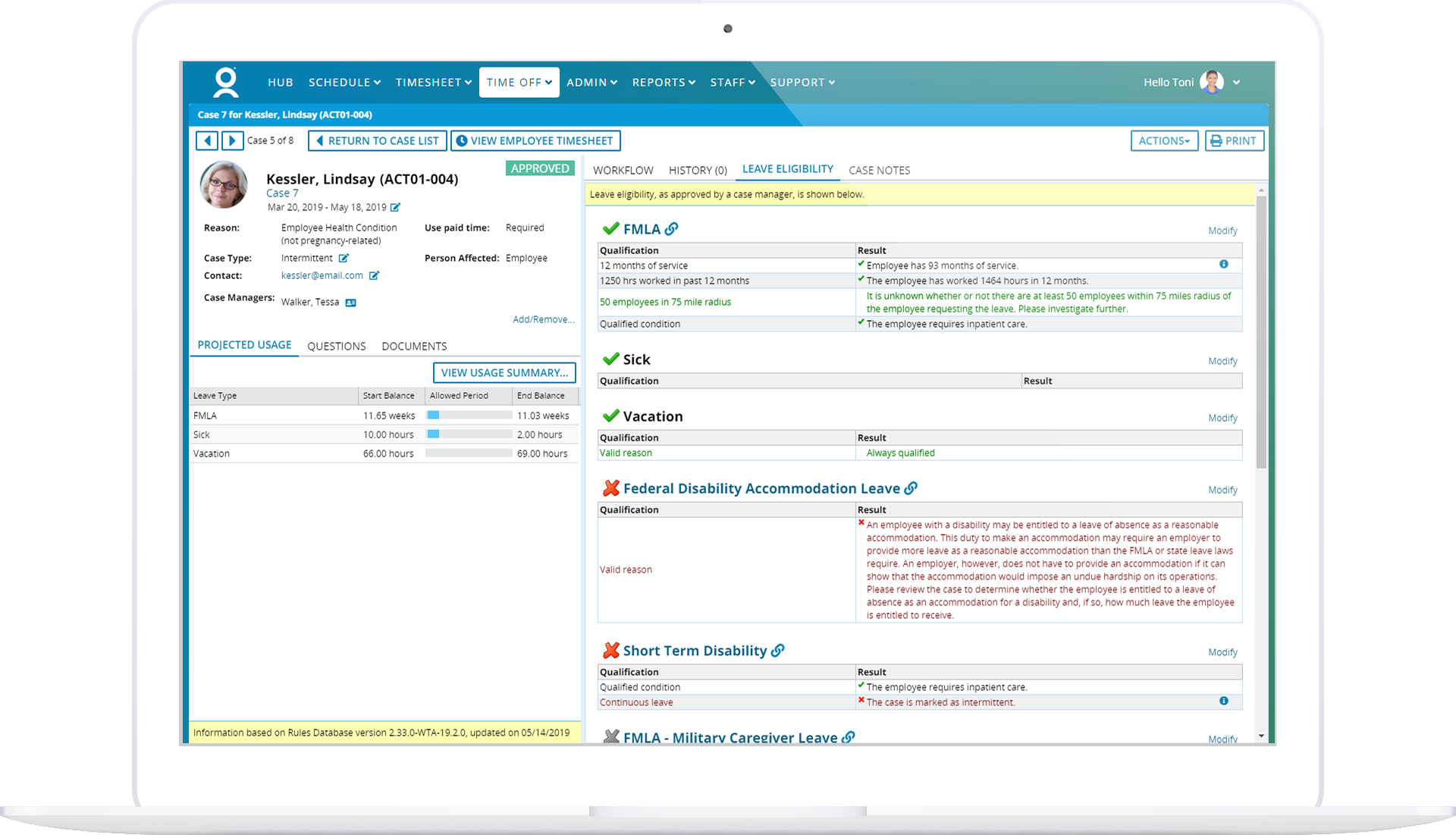Compliance Navigator
COVID-19 Guidance for Employers


Paul Kramer
Director of Compliance
As local and state governments across the United States loosen stay-at-home restrictions concerning COVID-19 and businesses resume on-site operations and employees return to work, employers need direction regarding wage & hour, leave of absence, and workplace safety issues. Well, the United States Department of Labor (DOL) and the Occupational Safety and Health Administration (OSHA) continue to issue guidance related to COVID-19 that should assist employers in these vital areas. Here are a few key points you should know about:
Family and Medical Leave Act (FMLA) Guidance
The DOL clarified that telemedicine visits are considered in-person visits in establishing a serious health condition under the FMLA, as long as the visit (1) includes an examination, evaluation, or treatment by a health care provider; (2) is conducted by video conference; and (3) is allowed and accepted by state licensing authorities. New guidance also indicates that the FMLA does not generally prohibit employers from having a policy requiring all employees to get a COVID-19 test before returning to the worksite after FMLA leave, even if the policy was instituted while the worker was on leave. Nevertheless, the Americans with Disabilities Act which requires that mandatory medical testing be job related and consistent with business necessity, may limit employers from performing some testing.
Families First Coronavirus Response Act (FFCRA) Guidance
The DOL opined in recently issued guidance that employers may require employees returning from FFCRA leave to telework, be assigned a new position, or take additional leave until they test negative for COVID-19, provided these rules apply uniformly to employees and not simply because the worker took FFCRA leave. Moreover, the guidance reinforces that employers may not discriminate against employees or prospective employees for exercising their leave rights under the FFCRA.
Fair Labor Standards Act (FLSA) Guidance
DOL guidance explains that telework must be treated the same as work performed at the employer’s worksite in determining compensability of time for non-exempt workers. In other words, employers must pay non-exempt employees for all telework hours if the employer knows or has reason to believe the work was performed, including unauthorized telework. New guidance also clarifies that taking emergency paid sick leave and expanded FMLA leave under the FFCRA will not affect the exempt status of employees.
OSHA Guidance
Among other things, OSHA issued guidance recommending a three-phrase approach for companies reopening and employees returning to work. To move to phase one, OSHA recommends that employers offer telework when feasible; limit non-essential business travel; allow proper social distancing by restricting the number of people at the worksite; and accommodate higher risk workers such as the elderly and those with serious health conditions or who have a high risk family member. In phase two employers should continue to make remote work available; can resume non-essential travel; can ease limitations on the number of people in the workplace but should maintain social distancing; and must continue to accommodate workers at higher risk. In phase three, employers may return to unrestricted staffing at job sites, generally in states or regions with no evidence of a COVID-19 rebound.
This is not the full extent of workplace guidance issued by the DOL and OSHA regarding COVID-19. Additionally, state and local authorities around the United States have released their own rules and guidance regarding the pandemic and enacted paid sick leave laws related to COVID-19. Employers would be wise to thoroughly research return-to-work issues to avoid potential liability and, if necessary, consult legal counsel.
Subscribe to The WorkForce Blog
Learn the art and science of maintaining productive, happy, engaged employees.
Discover More
Nucleus Insights from WorkForce Customers Research Note
Nucleus Research interviews WorkForce customers who validate why we’re ranked the #1 WFM enterprise vendor for 10 consecutive years.
Elevate Employee Experience: Checklist for Operational Leaders
Get the practical steps and technology functionalities operation leaders need to improve their employees’ work experiences.
Streamlining Complex Workforce Compliance Requirements Boosts Productivity
Discover how workforce compliance software helps EMEA organisations navigate complex legislation, enhance compliance and boost operational efficiency.




